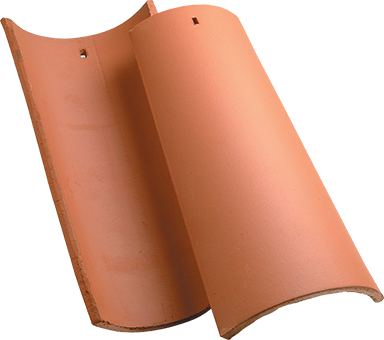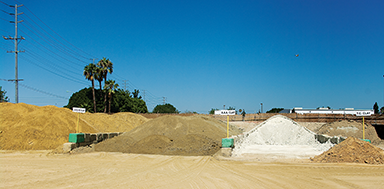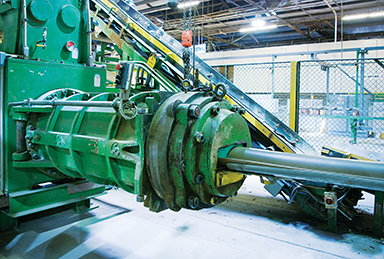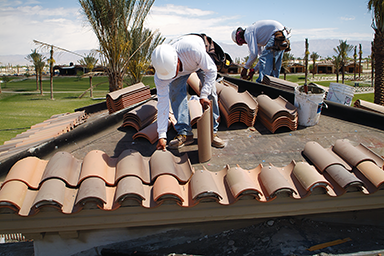
by Kayla Kratz
Clay roof tiles offer numerous benefits to commercial and residential projects. Inherently, the material is associated with minimal environmental impact in its sourcing, extraction, as well as manufacture.
As environmental awareness in building design and construction has increased, the greatest focus has been on sustainable building materials, both in manufacture and performance. Many tile-makers employ modern extraction and manufacturing methods that have enhanced the responsible production of roofing products. Specifically, some have even achieved Cradle to Cradle certification—one of the most stringent sustainability standards.
A third-party, multi-attribute, ‘eco-label’ administered by the Cradle to Cradle Products Innovation Institute, the program covers a broad range of products and takes a comprehensive approach to the assessment of both a product and the practices employed in its creations. The rating considers the material’s healthiness and its constituents, recyclability, or biodegradability, energy consumption, and carbon footprint associated with its manufacture, water stewardship, and social fairness. While most clay tile exhibit high recyclability and reusability, only a few manufacturing plants have earned the Cradle to Cradle certification.
| CRADLE TO CRADLE QUALITY STANDARDS |
| Cradle to Cradle certification was created and is administered by the Cradle to Cradle Products Innovation Institute (known formerly as McDonough Braungart Design Chemistry). The designation focuses largely on the use of safe materials that may be disassembled after use as a product and recycled as technical nutrients or composted as biological nutrients. All certified products meet a minimum requirement in five categories.
Material Health Material Reutilization Renewable Energy and Carbon Management Water Stewardship Social Fairness Cradle to Cradle emphasizes the product’s impact on the natural environment throughout all life stages, including a mandate that the product does not become waste, but is reformed and reused without harming the environment. Demonstrating the Cradle to Cradle ideal, clay tile is 100 percent recyclable and often reusable. |
In addition to the certification, clay tile’s performance properties make it a comfortable and economical roof to live under.
Additional benefits of the material include:
- ?high performance in helping protect the structure from the elements;
- ?reduction in attic temperature;
- ?low maintenance and easy roof repair; and
- ?durability and longevity.
Many of these qualities also translate into positive environmental performance. Modern production methods can complement the inherently sustainable performance with ‘green’ manufacturing techniques.

The lifecycle of clay tile
The complete sustainability picture can best be understood by looking at the lifecycle of clay tile, which can be broken into four core categories:
- ?pre-manufacture—including raw materials and sourcing;
- ?manufacturing—during which the materials are transformed into the building product;
- ?service life; and
- ?end-of-life—when the product is removed from the structure.
The lifecycle of building products is likened to that of people, where there is a clear beginning (i.e. cradle), and a clear end (i.e. grave). Clay tile differs from many other traditional roofing materials, such as asphalt shingles, in its demonstrated minimal impact on the natural environment through all life stages, and its recyclability at the end of the roof’s life (i.e. taken back to the cradle and employed on another roof or in a completely alternate use.)
Aesthetic styles
The various profiles of tile—flat, barrel, Roman pans—complement various architectural styles, and a wide range of colors is available. Clay colors may be fade-resistant, created by a chemical restructuring of the clay during firing. If kept clean, clay roofs may undergo little visual change over a period of decades.
| The Color of Clay |
| The hues most widely associated with clay tile—a palette of yellows, reds, and browns—do not necessarily reflect the clay found in the ground. Those finish colors are a product of the firing process. Heat effects both a structural change in the clay—vitrification, which makes it hard and strong—and chemical changes that alter its color. Dark gray clay can become bright red with the right amount of firing.The clay’s chemistry can be altered during firing to produce special colors. A blast of oxygen at the right moment, for example, can produce dark lines or flares. Tile makers employ such treatments to produce controlled variegation and make more visually interesting tile surfaces. Both the base color and these secondary colors are permanent parts of the clay. They are not dyes or stains, and they are resistant to fading. |
Even the emblematic barrel (or Mission-style) tile can be used for various looks. Installation techniques including blended colors, staggering, boosting, and serpentine patterns can be used to create visual interest, and allow a roof to make a significant contribution to the building’s architectural statement.
Modern tile configurations include variations on the tradition to meet different construction needs. Lightweight tiles are available as an alternative for re-roofing projects. A barrel-tile appearance can be accomplished either with traditional barrels or with S-shaped tiles that simplify installation and have lower labor costs.
Responsible raw materials
Sustainability in tile-making begins with the first phase of the tile’s lifecycle—the raw materials. Clay tile is made of naturally occurring geologic materials, such as clay and water. Some tile-makers use a high percentage of recycled material, or the by-products of mining processes. Utilizing this post-industrial waste clay repurposes the raw material for use in new clay tile. Tile may be up to 60 percent post-industrial recycled, and may help contribute to Leadership in Energy and Environmental Design (LEED) points for recycled content in the Materials and Resources (MR) category.
For example, when clay is locally sourced and extracted close to manufacturing plants, it dramatically reduces the environmental impacts of transportation. If the manufacturer is also within 804 km (500 mi) of the project, tile may qualify as a LEED locally sourced material.

Green manufacturing
The second phase of the lifecycle—manufacturing—involves forming wet clay, drying it, and heating it to high temperature. First, the raw clay is dried and ground. It is then passed through sieves to achieve the correct particle sizing. Finally, different clays are selected for their strength or color properties, and mixed to achieve a desired blend.
The mixed dry clay is hydrated to a density and viscosity much like natural clay, free of debris, consistent in texture, blended for a specific fired color, and reasonably homogenous properties that cannot be achieved on a large scale with materials in their natural state.
The manufacturing line presses the clay through an extruding machine, forming a continuous ribbon of the desired profile, cuts it into precisely sized units, and stamps any special features into the shape, a continuous process on a long production line. The pieces are dried in a special drying chamber and are then ready to fire.
The firing, or kilning, process has been thoroughly reinvented for energy efficiency. Contemporary production can involve a roller hearth kiln—a long conveyor path that runs through a series of burners—and can fire tile in as little as 90 minutes. Since kilning is the major energy-consumer in the manufacturing process, this technique dramatically reduces the tiles’ embodied energy. It also lowers the carbon footprint, especially when the kiln is fueled by natural gas. Moreover, excess heat recaptured for use in drying the tile for firing, is another energy-saving strategy called co-generation.
This type of kiln can precisely control the application of heat to achieve consistent tile color. It can also apply special treatments to create secondary color patterns and variegation in a way that combines a visually interesting piece-to-piece randomness, yet provides an overall consistency of color distribution on an installed roof.
Responsible tile manufacturing includes waste reduction. Green waste (i.e. pre-fire clay waste and manufacturing rejects; unfired clay has traditionally been referred to as ‘green’ clay), and a selection of unused fired product can be collected and re-introduced into the manufacturing process. Production use water should be captured and recycled back into the mix, thus never leaving the facility or polluting the environment.
Safety and best practices should be employed at the facility and throughout the manufacturing process to serve the surrounding community. An air filtration system should also be employed to vacuum all pre-extrusion clay dust by-product occurring during manufacture. This captured dust may be re-introduced back into the grinding process, minimizing waste and limiting dust for safety. Additionally, clay stockpiles should be kept properly moist, and the plant regularly swept, to limit materials getting into storm water runoff.

Sustainability benefits
Manufactured tile enters the third phase of its lifecycle—service life—when it is installed on the roof. A 2007 National Association of Homebuilders (NAHB) study, “Life Expectancy of Home Components,” indicates clay tile outperforms alternatives such as asphalt shingles for residential projects, making it one of the longest-lasting roofing materials, with an average 75-year life span. Similar performance could be expected on commercial roofs. This potentially reduces the number of replacements needed during the service life of a building, eliminating additional material consumption, landfill disposal, and other impacts associated with roofing manufacture, transportation, and installation.
An installed clay tile roof exhibits several characteristics contributing to energy efficiency of the building and comfort for its occupants. These effects are especially pronounced in hot weather, and clay tile has long been a favorite in hot climates across the Sun Belt.
The function of a roof is to protect the interior from wind, rain, and snow, but also from the sun. Clay tile achieves this goal by reducing the amount of solar radiant heat that impacts the roof, shedding some of that heat back away from the building, and reducing the flow of heat from the tile to the roof deck and the building interior.
The first line of defense is reflectance—the ability to ‘turn away’ solar radiant heat shining on the surface. Especially light and terra cotta colors, clay tile exhibits excellent thermal reflectance.
The second defense is thermal emittance—the ability of the surface to give off heat rather than contain it. Heat that is absorbed, rather than reflected, at the tile surface readily radiates back out of the surface; only a small percentage penetrates to the interior of the tile. Since heat is solely being applied to the top surface, it emits back from that surface, away from the building. Clay typically scores in the range of 0.85 on an emissivity scale of 0.0 to 1.0, showcasing it as a highly emissive material.
Solar reflectance and thermal emittance figures can be combined to create a measurement—solar reflectance index (SRI)—which allows different roof systems to be compared. High SRI equates to less heat transfer. The “Heat Island Project” supported by Lawrence Berkley National Laboratory (LBNL) compiled cool roof data into a database and found that gray asphalt—one of the lighter colors of roofing shingles—has an approximate SRI of 22. Whereas, red clay tiles, for example, are considerably cooler with an approximate SRI of 36.

SRI is used to determine which products qualify as ‘cool roof’ materials. The Cool Roof Rating Council (CRRC) assigns ratings on a product-by-product basis, allowing architects and designers to easily compare them. The specific SRI necessary for a cool roof varies depending on its slope and the geographic region in which the building is located.
Clay tile can contribute to cooler attic temperatures in the summer and acts as an insulator in the winter keeping the attic warmer. In 2010, the U.S. Department of Energy (DOE) estimated annual cool roof savings on air-conditioning at $0.012/m2 ($0.13/sf/year) of roof area. They estimated the penalty in heating energy at only $0.0027 m2/year ($0.03/sf/year).
Heat that penetrates the first two lines of defense can build up in the roof material. Clay tile has a third line of defense—high thermal mass, absorbing considerable heat before beginning to transfer it. This has the effect of smoothing out the interior impact of exterior temperature changes.
As daytime temperature rises and some solar heat penetrates past the tile surface, the clay ‘fills up’ with heat before it transfers heat to the interior. The thermal mass effect is most pronounced in locations where there is a wide differential between daytime and nighttime temperatures. It may delay heat flow through the envelope by as much as 10 to 12 hours, and peak heat transference may not be reached until late in the day, when exterior temperatures are already dropping and starting to cool down the roof. The interior experiences less temperature shift, and therefore may use less energy for air-conditioning. At night, absorbed heat is slowly released, which may help the building to maintain warmth.
The engineering of clay tile—its shape and the structure of its installation—provides a fourth layer of defense. There is space under the tile to allow airflow between the tile and the roof deck, improving the roof’s insulating qualities. Airflow allows some heat being radiated from the bottom of the tile to be removed before it is absorbed by the remainder of the building. Heated air is channeled upward along the deck surface and released through the ridge.
These four lines of defense, taken together, may dramatically reduce the need for air-conditioning, reducing the load on the structure’s HVAC systems and lowering building operating costs.

Cradle to cradle
The fourth phase in the lifecycle of clay roof tile begins after it is removed from the roof. In many products, this would be the ‘grave’ phase of the cradle-to-grave cycle, when many roofing materials enter the landfill.
Due to clay’s durability and longevity, it may outlast the building on which it is installed. Clay tile is 100 percent recyclable. It can be crushed and re-introduced into tile production, or put to other uses such as baseball fields.
Unlike most other building materials, however, clay tile, if properly salvaged, can be reused as roof tile. This is perhaps the most pure version of the cradle to cradle lifecycle where products are repurposed for new use.
Conclusion
The movement toward energy efficiency and lower carbon emissions has made the inherent properties of clay tile roofs more beneficial than ever. By sourcing raw materials responsibly and using modern tile making processes, manufacturers have made products compliant with contemporary sustainability values. Further, the aesthetics of clay tile continue to offer the designer appealing architectural options.
Kayla Kratz is the product manager for Boral Roofing LLC, a subsidiary of Boral USA and a provider of roofing solutions for architects, commercial, and residential builders. She is responsible for Boral Roofing’s product portfolio including new product development, strategic marketing, and product launch implementation throughout the United States. Kratz earned her bachelor’s of science in business administration from Southern Nazarene University. She can be contacted by e-mail at kayla.kratz@boral.com.





I agree that clay roofs are far more durable and environmentally friendly. Because of this, Many People have chosen the clay roofing option over any other material. In the long run, this will indeed prove to be the better option.
Clay roofing can provide a solid compromise between environmentally-questionable materials and less-sturdy organic solutions. Surprised it’s not more popular.
I like how you mentioned that the manufacturing of clay tiles is sustainable. My husband and I are going to be building a new house, and we want to use materials that will have a low impact on the environment to try and do our part to keep the earth healthy. Perhaps it would be a good idea to have a tile roof installed so we know we’re using sustainable materials.